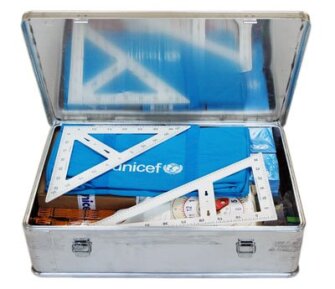When wide-scale disaster hits a region, reopening schools is among the first priorities of relief officials. That’s often no easy task—following the tsunami that struck Southeast Asia this past December, as many as 1,350 schools were damaged or destroyed.
Enter the United Nations Children’s Fund with School-in-a-Box, which allows teachers to create makeshift classrooms almost anywhere—in tents, in metal shipping containers,even under shade trees. Each of the large metal trunks contains classroom materials for two classes of 40 students, and the box’s lid can be painted to double as a chalkboard.
An early version of UNICEF’s kit was first used in 1994 to teach children in Rwandan refugee camps following that country’s internecine conflict. Since then, they’ve been put to use as part of a massive back-to-school push in post-war Afghanistan; in drought-stricken regions in Africa; and in the Iranian city of Bam, which was leveled by earthquakes in December 2003. More than 23,000 of the kits were distributed worldwide that year alone.
“In the aftermath of a disaster, ... it is imperative to help children rebuild a sense of routine in their daily lives,” said Kari Egge, UNICEF’s Iran representative, following the Bam earthquake. Education “does help children to focus their energies on something other than the terrible conditions they are living in and the horrors that they have already experienced.”
Weighing about 115 pounds, the aluminum box contains classroom materials, including the ones pictured here, for up to 80 children. It’s lid can be painted with the enclosed brush and black paint, allowing it to double as a chalkboard.





